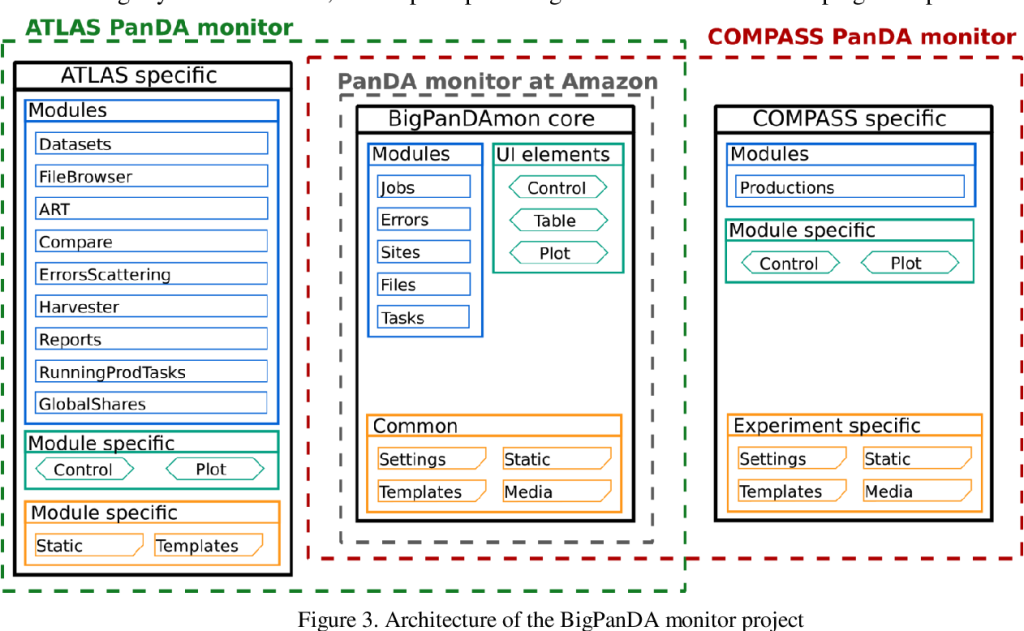What is BigPanda ?

BigPanda is an AI-powered platform for incident management and automation within the realm of AIOps (Artificial Intelligence for IT Operations). It utilizes machine learning and automation to help businesses streamline incident detection, resolution, and prevention, ultimately improving IT operational efficiency and reducing downtime.
Top 10 use cases of BigPanda?
Top 10 Use Cases of BigPanda:
- Real-time Incident Correlation and Prioritization: BigPanda ingests data from various IT tools and uses AI to correlate seemingly unrelated alerts, automatically identifying and prioritizing critical incidents for faster resolution.
- Automated Root Cause Analysis (RCA): The platform leverages machine learning to analyze historical data and incident patterns, pinpointing the root cause of issues swiftly and minimizing troubleshooting time.
- Improved Incident Response Collaboration: BigPanda creates a unified platform for IT teams to collaborate on incident resolution, providing shared visibility and facilitating communication amongst various teams.
- Automated Playbooks and Workflows: Predefined actions and workflows can be triggered based on specific incident conditions, automating tasks like restarting services, notifying personnel, or escalating issues.
- Reduced Mean Time to Resolution (MTTR): By automating tasks, streamlining workflows, and accelerating root cause analysis, BigPanda significantly reduces the time it takes to resolve incidents, improving uptime and service availability.
- Automated Incident Reporting and Analysis: The platform generates detailed incident reports for analysis and post-mortem reviews, aiding in identifying trends and preventing future occurrences.
- Improved IT Operational Efficiency: Automating workflows and freeing up IT teams from manual tasks allows them to focus on more strategic initiatives and proactive IT management.
- Enhanced Service Levels: Faster incident resolution and proactive prevention translate to better service levels for end users, ensuring consistent IT service performance and availability.
- Predictive Maintenance and Issue Resolution: By analyzing historical data and trends, BigPanda can predict potential problems before they occur, enabling proactive measures to prevent incidents and downtime.
- Improved IT Cost Efficiency: Reduced downtime, faster resolution times, and automated workflows ultimately lead to cost savings by minimizing resource usage and manual troubleshooting efforts.
It’s important to note that these are just some of the most common use cases, and the specific benefits will vary depending on the individual needs and priorities of each organization. However, BigPanda’s AI-powered approach to incident management and automation can significantly enhance IT operations and deliver tangible value across various areas.
What are the feature of BigPanda?
BigPanda offers a comprehensive suite of features designed to revolutionize incident management and automate IT operations. Here are some of the key functionalities:
Real-time Alert Correlation and Prioritization:
- AI-powered event correlation: Aggregates and normalizes event data from diverse sources, including monitoring tools, applications, and infrastructure.
- Smart alert filtering: Leverages machine learning to filter out noise and identify actionable incidents, reducing alert fatigue.
- Dynamic incident prioritization: Prioritizes incidents based on severity, impact, and business context, ensuring critical issues are addressed first.
Automated Root Cause Analysis (RCA):
- Generative AI for RCA: Employs AI models to automatically suggest root causes, saving valuable time and effort compared to manual investigations.
- Historical data analysis: Leverages historical incident data and trends to pinpoint recurring patterns and identify potential root causes faster.
- Real-time change tracking: Monitors infrastructure and configuration changes to identify potential sources of incidents.
Improved Incident Response Collaboration:
- War room creation: Facilitates collaboration during incident resolution by creating dedicated war rooms with real-time information and communication tools.
- Multi-team participation: Provides access and visibility to relevant teams based on their roles and responsibilities.
- Shared incident context: Offers a unified view of the incident, streamlining communication and decision-making.
Automated Playbooks and Workflows:
- Predefined and custom workflows: Creates automated workflows for repetitive tasks like service restarts, notifications, and escalations.
- Integration with IT tools: Integrates with existing IT tools and automation platforms for seamless workflow execution.
- Self-healing capabilities: Automatically takes actions based on specific incident conditions, reducing manual intervention.
Additional Features:
- Detailed incident reporting and analysis: Generates comprehensive reports for post-mortem analysis and identifying improvement opportunities.
- Predictive maintenance: Leverages AI to predict potential issues before they occur, enabling proactive prevention.
- IT service management (ITSM) integration: Integrates with popular ITSM tools like ServiceNow and Jira.
- Open API: Provides an open API for custom integrations and scripting extensions.
- Security and compliance: Adheres to strict security standards and compliance regulations to ensure data privacy and protection.
By combining these features, BigPanda offers a robust platform for effective incident management and automation. It streamlines workflows, accelerates resolution times, and drives efficiency across IT operations, ultimately leading to improved service levels and reduced costs.
How BigPanda works and Architecture?

BigPanda’s AI-powered incident management platform leverages complex architecture and algorithms to efficiently tackle IT operations challenges. Here’s a breakdown of its key functionalities and architectural components:
Data Ingestion and Processing:
- Data Collection: BigPanda ingests event data from diverse sources like monitoring systems, applications, infrastructure, and logs. This data can be in various formats (e.g., JSON, Syslog) and is collected through connectors or APIs.
- Normalization and Enrichment: The platform pre-processes the collected data by standardizing formats, enriching it with context (e.g., timestamps, severity levels), and filtering out noise to focus on relevant information.
- AI-powered Correlation and Prioritization: Machine learning algorithms analyze the normalized data to identify relationships between seemingly unrelated events, automatically clustering them into “incidents” and prioritizing them based on business context and potential impact.
Root Cause Analysis and Automation:
- Advanced Analytics: BigPanda employs various techniques like time series analysis, anomaly detection, and historical data comparison to pinpoint the root cause of incidents, suggesting probable sources and contributing factors.
- Automated Playbooks and Workflows: Predefined or custom “playbooks” can be triggered based on specific incident conditions, automatically taking actions like restarting services, notifying personnel, or escalating issues.
- Generative AI and Change Tracking: BigPanda’s AI models dynamically suggest possible root causes, while continuous change tracking helps identify changes to infrastructure or configuration that might be related to the incident.
Architecture:
BigPanda’s architecture can be viewed in two ways:
- Functional Modules: These modules handle specific tasks like data ingestion, normalization, correlation, analysis, and workflow execution. Each module operates independently but interacts with others for smooth data flow.
- Software Components: This refers to the individual software components like databases, message queues, and application servers that make up the platform. These components work together to support the functionalities of the modules.
Key Architectural Features:
- Scalability: The architecture is designed to handle large volumes of event data and incidents from diverse sources, scaling horizontally to accommodate growing demands.
- Resilience: Redundancy and fault tolerance mechanisms ensure continuous operation even if individual components fail.
- Security: Strict security measures protect sensitive data throughout the processing chain, complying with industry standards.
- Openness: The platform integrates with various IT tools and systems through APIs and connectors, promoting a unified view of IT operations.
Overall, BigPanda’s AI-powered approach, combined with its scalable architecture, empowers businesses to significantly improve incident management processes, automate tasks, and ultimately achieve optimized IT operations.
How to Install BigPanda it?
Installing BigPanda involves several steps, but the specific process depends on your chosen deployment method and environment. Here’s an overview to guide you:
Deployment Methods:
- Cloud-Based: Managed entirely by BigPanda in their cloud environment. No installation on your end required.
- On-Premises: Requires installing software on your physical or virtual machines.
General Installation Steps:
1. Choose your deployment method:
Consider your technical expertise, infrastructure complexity, and security requirements when deciding between cloud-based and on-premises deployment.
2. Gather necessary information:
- Subscription details: Your BigPanda subscription plan and activation key.
- System Requirements: Ensure your environment meets the system requirements for your chosen deployment method. Find these on the BigPanda website or in the documentation.
- Network Configuration details: Understand your network topology, IP addressing, and any relevant firewall configurations (especially for on-premises deployments).
3. Follow the installation guide:
BigPanda provides detailed installation guides for both cloud-based and on-premises deployments on their site.
Cloud-Based Deployment:
- Activate your subscription and configure your environment through the BigPanda web console.
- No software installation required on your end.
On-Premises Deployment:
- Download and install the BigPanda agent software on your designated servers.
- Configure the agent to connect to the BigPanda cloud platform.
- Integrate the agent with your monitoring tools to send alert data to BigPanda.
4. Additional Considerations:
- Licensing: Ensure you have the necessary licenses for your chosen deployment method and features.
- Configuration customization: Tailor settings and integrations based on your specific needs and environment.
- Post-installation tasks: Verify agent connectivity, test alert sending, and monitor system health.
Important Notes:
- Due to variations in deployment methods and environments, I cannot provide specific installation instructions without knowing your chosen details.
- Consider seeking professional assistance for complex on-premises deployments, especially if you lack technical expertise.
Basic Tutorials of BigPanda: Getting Started

BigPanda is an AIOps (Artificial Intelligence for IT Operations) platform that helps IT and DevOps teams detect, investigate, and resolve incidents faster. Below is a simplified guide for getting started with BigPanda.
Prerequisites:
- Access to BigPanda:
- Ensure you have access to the BigPanda platform.
Tutorial: Basic BigPanda Setup
Step 1: Accessing the BigPanda Platform
- Open a web browser and navigate to the BigPanda platform.
- Log in using your credentials.
Step 2: Initial Configuration
- Follow the initial setup wizard or configuration steps provided by BigPanda to set up your environment.
- Configure basic settings, including timezone, language preferences, and others.
Step 3: Data Ingestion
- Configure data ingestion sources to bring in data from your monitoring tools, ticketing systems, or other data repositories.
- BigPanda supports integrations with various monitoring and observability tools.
Step 4: Incident Correlation Rules
- Define incident correlation rules to group related alerts or events into incidents.
- Set up rules based on attributes like severity, source, or custom labels.
Step 5: Environments and Topologies
- Define environments and topologies to organize and categorize your infrastructure.
- BigPanda allows you to model your IT landscape to better understand dependencies and relationships.
Step 6: Notifications and Collaboration
- Configure notification channels to receive alerts and updates. This could include integrations with email, Slack, or other collaboration tools.
- Set up collaboration features to enable communication and teamwork within the BigPanda platform.
Step 7: Dashboards and Reporting
- Create custom dashboards to visualize and monitor key metrics, incidents, and trends.
- Explore reporting features to generate and export reports on incident resolution times, system performance, and other relevant data.
Step 8: Incident Management
- Utilize the incident management features to track, investigate, and resolve incidents.
- BigPanda provides tools for root cause analysis and incident response.
Step 9: System Administration
- Configure system settings, user roles, and permissions based on your organizational requirements.
- Set up user accounts and manage access control to the BigPanda platform.
Note:
- This tutorial provides a basic overview, and actual configurations might involve more detailed settings based on your organization’s requirements and the specific features of BigPanda.
Say goodbye to the hassles of bike ownership! MotoShare.in offers affordable rentals, whether you need a scooter for errands, a bike for a road trip, or a reliable ride to explore new cities.

 Starting: 1st of Every Month
Starting: 1st of Every Month  +91 8409492687
+91 8409492687  Contact@DevOpsSchool.com
Contact@DevOpsSchool.com
